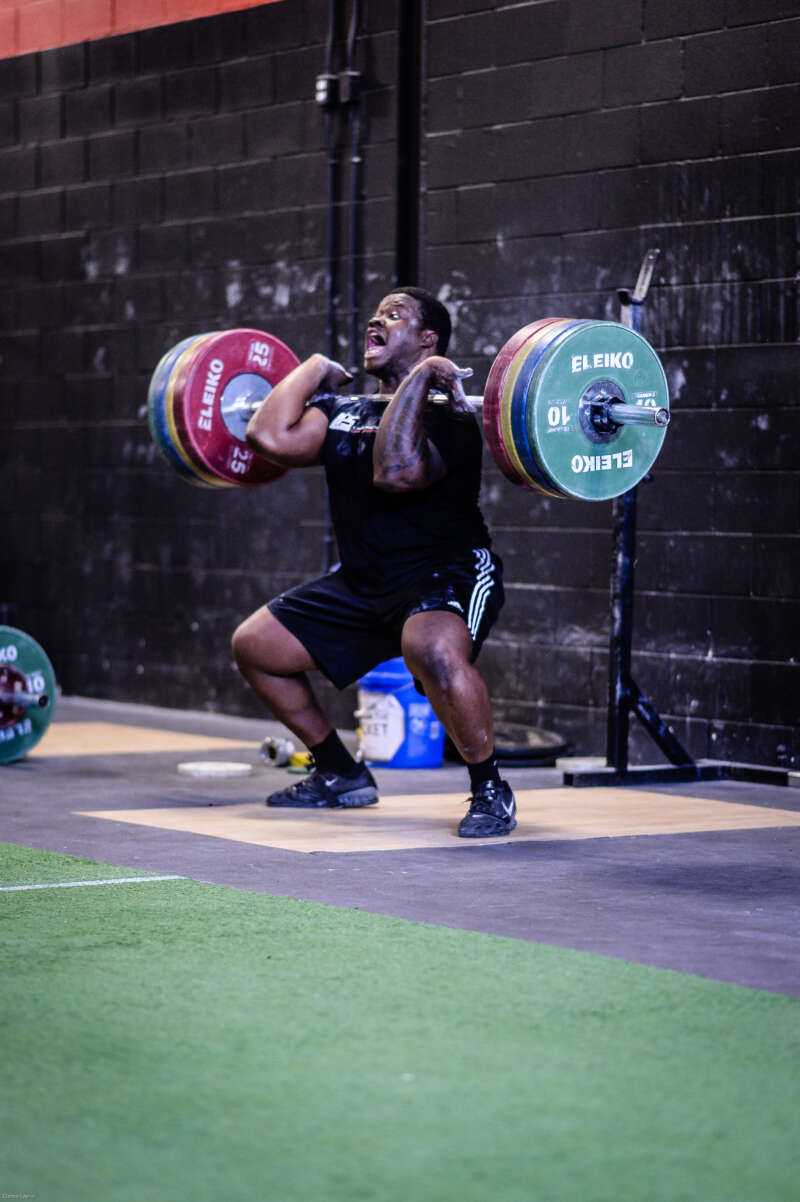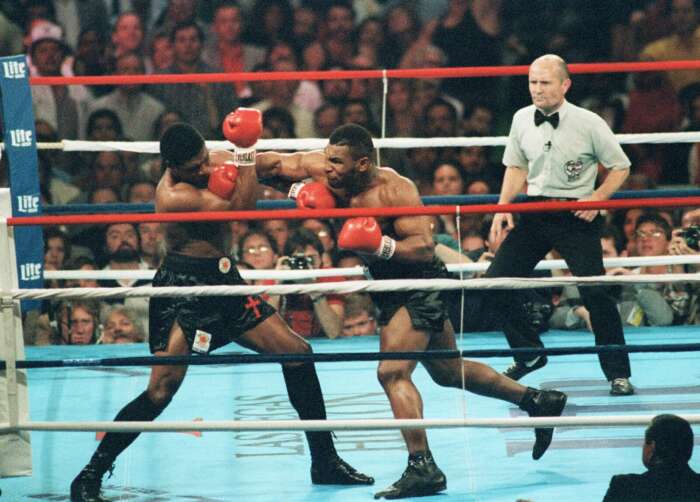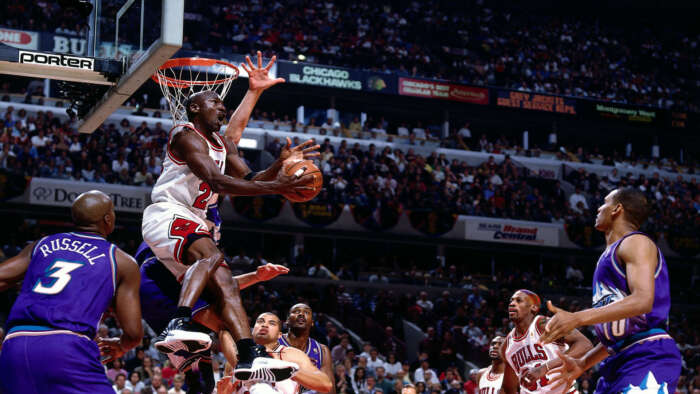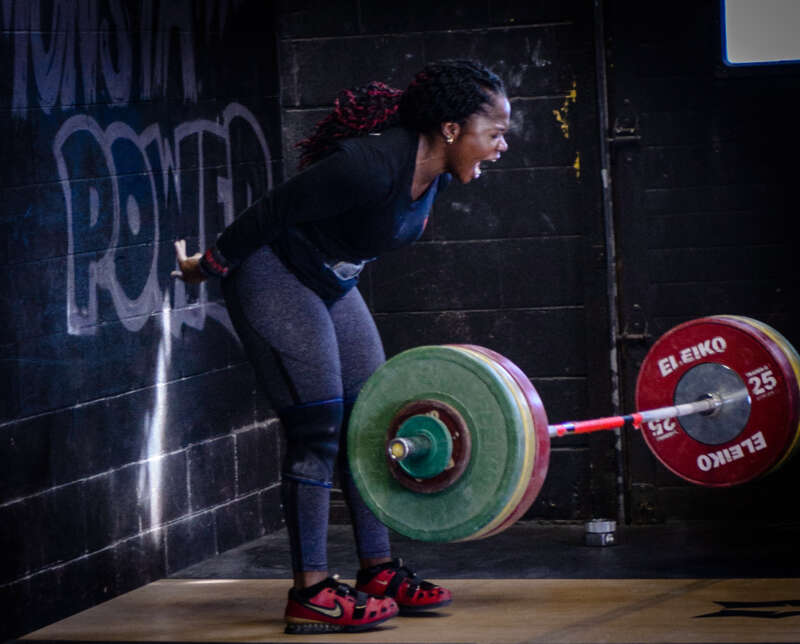What is a Monsta
MONSTA mon·sta noun; A true competitor embodies unwavering resilience. They approach every challenge with an intense determination, pushing themselves to excel regardless of the opponent’s stature or experience. Faced with setbacks or unmet goals, they demonstrate a relentless pursuit of improvement, consistently attacking the challenge with renewed focus. These individuals possess an unyielding spirit, inspiring respect from their peers and opponents alike. Their presence on the field, court, or ice is a palpable force, a testament to their unwavering commitment to excellence.

Photo by Clance Laylor
Cultivating a dominant on-court/ice/field presence, one that inspires trepidation amongst competitors, requires a two-pronged approach.
Athletes must develop unshakable mental fortitude. This is achieved by consistently exposing oneself to complex training scenarios and overcoming them. By systematically confronting challenges, mental resilience is honed, fostering a composed and formidable presence in competitive environments.
A Monsta’s Mindset
“Everyone Wants to Be a Monsta Until They See What Real Monstas Do.” – Wayne Moore, Former CFL player.

Photo by Clance Laylor
To cultivate exceptional mental fortitude, training scenarios must generate stress levels exceeding those encountered in competition. Athletes who consistently make clutch plays and readily take on the responsibility of winning demonstrate a well-developed mental edge. This tenacity is a conscious choice, not an innate ability. It stems from a willingness to be persistently challenged, akin to being “thrown into the deep end” and persevering. The mind presents a formidable obstacle, often whispering doubts and urging surrender. Athletes must choose to push on despite these internal narratives. By persistently confronting high-pressure situations and refusing to succumb to self-doubt, athletes build the mental resilience necessary to excel under pressure.
This is why it’s important to find a training system, the right coaches, and the right environment that incorporates frequent, high-stakes scenarios that replicate the pressure of critical competition moments.
These scenarios can include recreating grand slam situations, game-winning shots, or sudden death overtime. By consistently encountering these high-pressure environments, athletes develop the ability to perform under pressure. Failing to perform in these training situations isn’t viewed as a terminal setback, but rather an opportunity to learn and improve. Athletes are then presented with additional challenges to refine their skills and overcome the initial setback. This continuous cycle of high-pressure exposure, performance evaluation, and targeted practice fosters a growth mindset and cultivates the mental resilience necessary to succeed under pressure. The emphasis is not on an “attack or fail” mentality, but rather on a deliberate approach to learning and improvement from both successes and failures. This comprehensive training approach is believed to be a key factor in producing successful athletes.
“Pressure Creates Diamonds.” – Clance Laylor

Mike Tyson’s path to boxing legend wasn’t paved with privilege. Growing up in a rough neighborhood, he faced adversity daily, forced to defend himself against threats. This constant struggle undoubtedly shaped his tenacity and fighting spirit. Rather than succumbing to these challenges, he embraced them, honing his skills and channeling his experiences into his boxing career. The odds he faced were undeniably stacked against him, but he persevered. Without confronting this adversity, the world might never have known Mike Tyson, the formidable boxer.

Michael Jordan’s legendary work ethic finds its roots in an early setback. Despite his talent, he was cut from his high school varsity team due to his height. This could have easily discouraged him, but Jordan used this adversity as fuel. He understood that growth often comes from facing challenges (strength comes from being exposed and facing adversity). This experience undoubtedly shaped his unwavering determination.
Jordan’s competitive spirit extended beyond high school. The Detroit Pistons consistently thwarted his early playoff aspirations. Rather than succumbing to frustration, he channeled this rivalry into a relentless pursuit of improvement. This competitive fire, some might say, even fueled a personal animosity towards Pistons’ player Isaiah Thomas. However, it is undeniable that Thomas, along with the Pistons, played a significant role in Jordan’s relentless drive to excel, ultimately contributing to his greatness.
Elite athletes possess a remarkable ability to transition between a composed state and an intense focus during training. While approachable and collected in casual settings, they exhibit a laser-sharp concentration and unwavering determination when it’s time to work. Training becomes a battle against self-doubt, a silent struggle for mastery. They push their limits, attempting weights previously unconsidered. The specter of failure looms large, creating a pressurized environment.
However, overcoming both the internal voice and the physical challenge unleashes a surge of euphoria. Their triumphant shouts celebrate not just conquering the weight, but conquering self-doubt. This confidence, forged in the crucible of rigorous training, is an invaluable asset. It cannot be replicated; it’s a testament to their relentless pursuit of self-improvement and their willingness to confront, not circumvent, challenges.

Photo by Clance Laylor
Becoming a Monsta
“The gym should represent a place of work” – Charles Poliquin
The physical transformation required to excel at the LPS facility is a demanding and humbling experience. Athletes arrive with varying levels of preparation. Some may lack prior gym experience and anticipate a less rigorous program. Others, accustomed to being the strongest on their team, might expect rapid progress. Still others come in with limitations due to past injuries or underdeveloped strength.
Regardless of their background, every athlete begins by building a solid foundation. This foundation of strength serves as the bedrock for further development. As they progress, brick by brick, their physical capabilities improve, paving the way for their journey towards becoming a dominant athlete.
Training under the right system with the right coaches will foster a noticeable improvement in your athletic performance. Athletes experience increased vertical jump height, faster running speeds, and greater throwing power, all accompanied by a significant overall strength gain. This progress is not without its challenges. As the body adapts to progressively heavier loads on a weekly basis, athletes may experience soreness and temporary dips in perceived energy levels.
This adaptation process, however, is an essential component of building strength.
Offseason training specifically targets these adaptations, preparing the body for the rigors of competition. Squatting double bodyweight serves as a benchmark at LPS, and the program strategically guides athletes towards achieving this goal. The journey is undoubtedly demanding, but it equips athletes with the physical capabilities necessary to excel in their respective sports.
If you want to be an elite athlete, it requires a rigorous training environment to cultivate oneself to be unfazed by competition pressure. Having consistently confronted and overcome challenging training scenarios, the stress encountered during competition becomes a manageable hurdle.
Athletes develop a strong mind-body connection, learning to differentiate between fatigue signals and the need to persevere, all developed with the right coaching eye. Similar to the internal struggle experienced during demanding training sessions, in-game situations present opportunities to push past physical limitations.
Consistent practice under pressure is paramount in developing this mental fortitude; the ability to silence self-doubt and maintain peak performance cannot be achieved without the rigors of physical stress.
In a world that is constantly changing, there are some things that never change. Individuals need to go through challenging situations to build mental and physical resiliency. If an individual does not face mental stress, they do not build resiliency. If an individual does not face physical stress, they do not gain strength. In 2024 the word stress is becoming polarized for something negative. However, I believe that stress (dosed correctly) is the most positive aspect for an individual’s development.
“If an organism is not stressed it does not grow” – Clance Laylor.
Leave A Comment